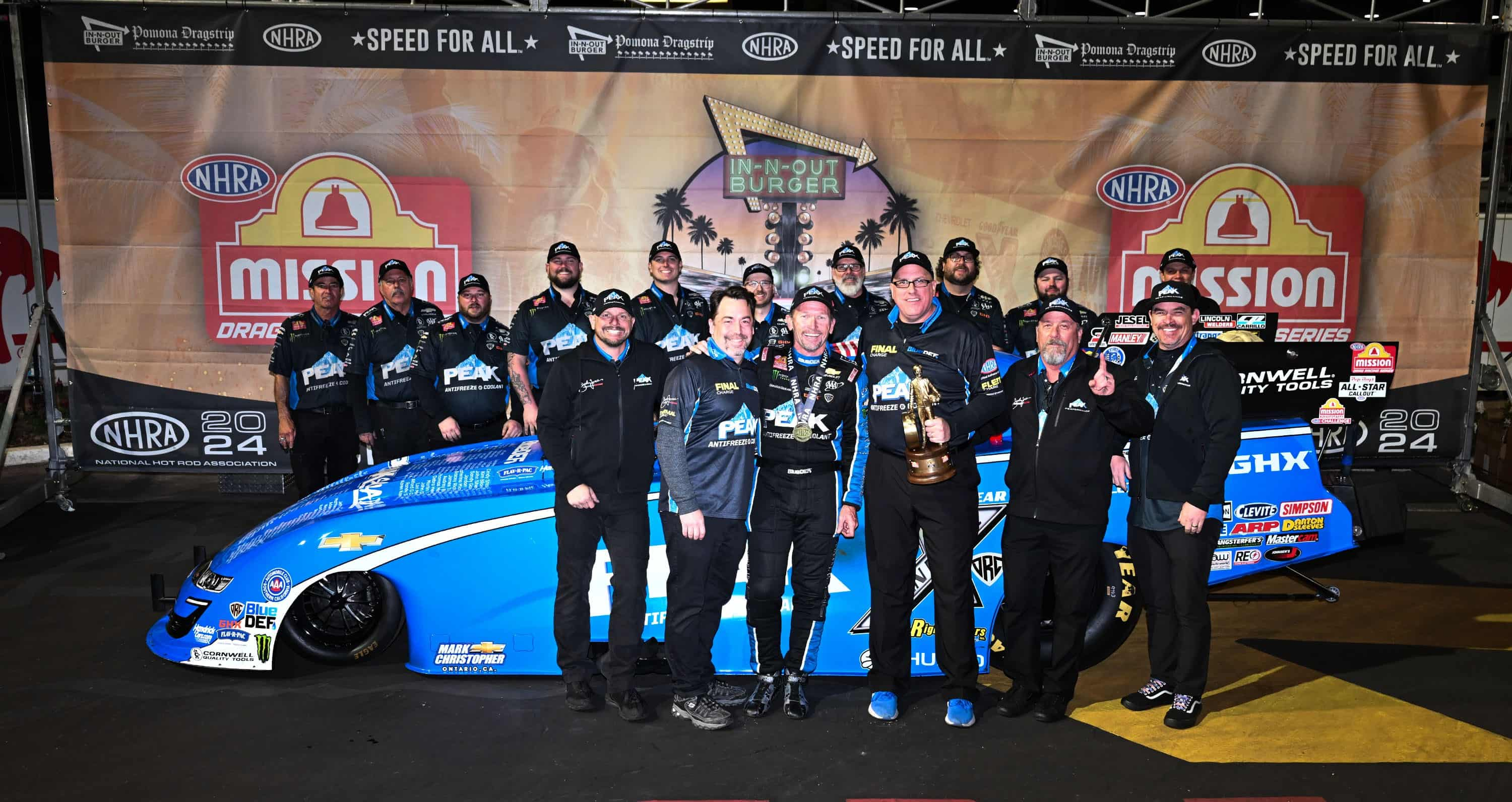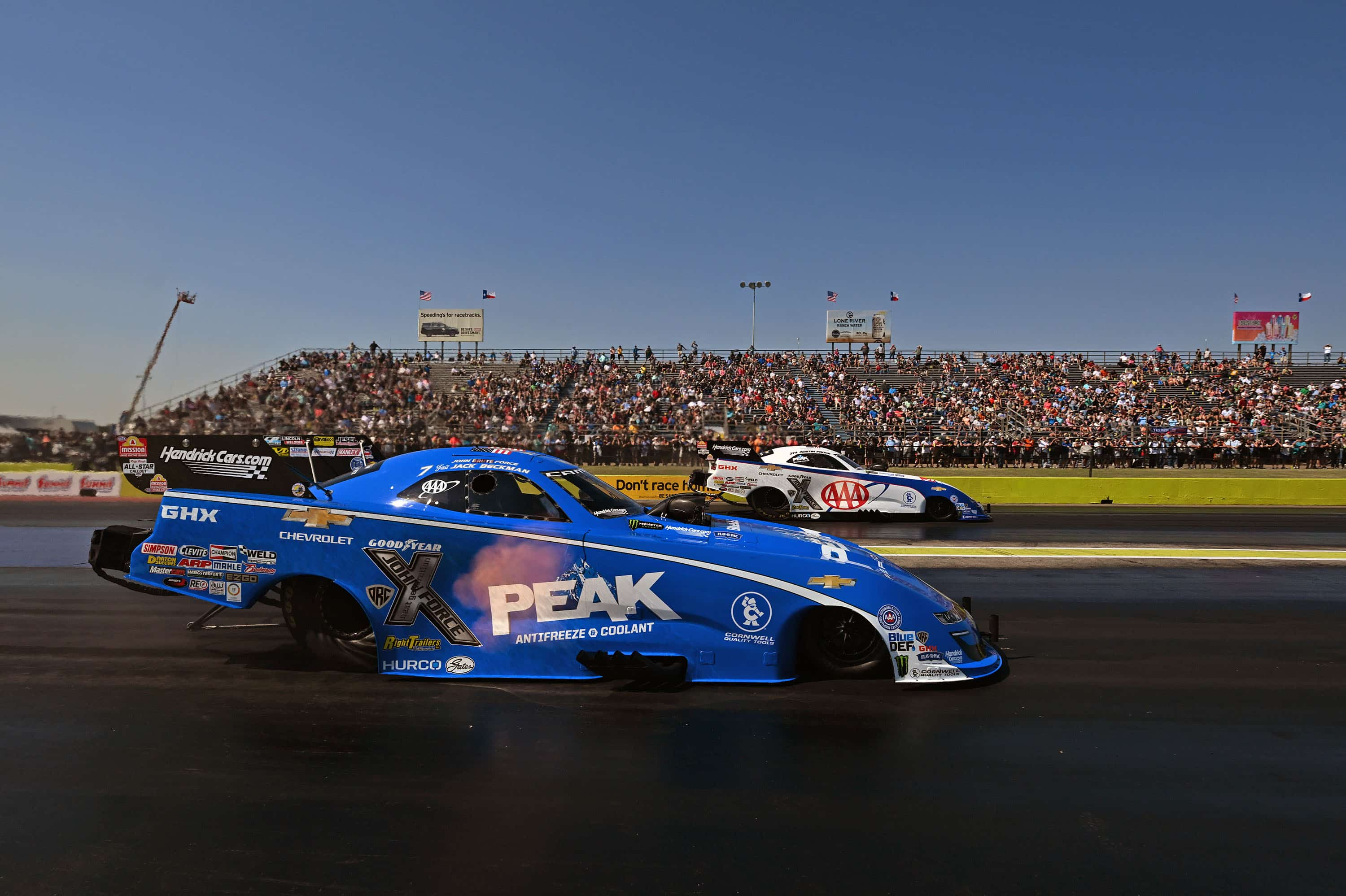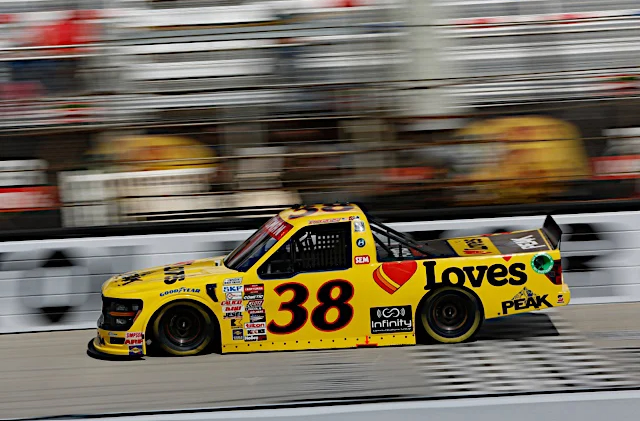
New to Racing? A Motorsports Insider Explains Where to Start & What to See
- Motorsports
- PEAK
- March 6, 2025
If you're new to racing, keep reading for the full auto racing experience for newbies!
Auto racing is one of the fastest-growing sports in the United States, attracting surging interest from fans, competitors, and team sponsors. If you're brand new to auto racing, our Motorsports 101 article covers everything you need to know about the different types of auto racing, how leagues are organized, and how competitions work.
The sprawling motorsports landscape includes everything from the high-profile Formula 1 and NASCAR circuits to niche formats like drag racing and off-road racing. With all the racing that’s out there, it's easy to feel overwhelmed and unsure where to start. Don’t worry, we’re here to help!
We sat down with in-house auto racing expert and OWI director of sports marketing, Brian Bohlander, to get the inside scoop. Brian’s been involved in all facets of professional motorsports including as a driver who won championships at multiple levels — including taking a class win at the celebrated (and incredibly challenging!) Mint 400 off-road race in 2020.
From which races you should see to what to look for when you’re watching, elevate your fan experience with Brian’s insider tips.


The in-person racing experience
According to Brian, "TV does some motorsports no justice whatsoever. It's something you have to experience in person, even if it's just once, for the whole sheer sensory element of it."
Consider the experience of seeing an incredibly powerful dragster tearing down the track. These cars are nothing short of marvels of automotive engineering. "Based on engineering principles, there's no way a vehicle should be able to perform as they do on the strip," Brian says. "They accelerate from 0-100 MPH in 8 tenths of a second which is faster than an F-14 jet."
According to Brian, “the entire field of the Daytona 500 has less horsepower than a pair of nitromethane powered dragster’s that make 11,000 horsepower each.” From the blasting roar of the engine to the ground shaking beneath your feet, that’s something you want to experience in person.
Motorsports to watch on TV
As amazing as it can be to experience something like a drag race live, there are some races that may be better suited for TV. Take, for example, road racing, particularly off-road desert racing. If you’re watching in person, your view may be confined to a cloud of dust and the chase helicopter following behind it.
According to Brian, with today’s digital and satellite technology such as Starlink, drivers can have onboard footage streamed to the fans phone live to see exactly what the driver is experiencing behind the wheel. That makes streaming and TV a cool way to watch this type of racing. You won’t experience that viewpoint in person — unless you’re streaming on your phone while you’re there (which most fans do!).
"A race like the Mint 400 has over a 100-mile closed course and if you attend live, you're going to see maybe a couple of miles of it as the racers come and go," Brian explains. "But now, you can watch everything from the driver's perspective, and you really appreciate the skill it takes to race at night with limited visibility, on a dusty, single lane road, going as fast as you can."
Catch some of the top off-road races, like the Mint 400 or the Baja peninsula events like the Baja 500 or 1000 from the comfort of your living room and you’ll actually get a taste of what it’s like to barrel through the desert at top speed.


Auto racing events for your bucket list
You’ve heard of the marquis events, and at least one of these must-see races is worth putting on your bucket list. Here’s what to expect when you’re there.
Indianapolis 500
The Indy 500 is as much about what you'll see on the track as it is about the overall fan experience. Of course, there’s the fun, festive atmosphere and the opportunity to tailgate on the infield of the track. But seeing the race in person is also about experiencing the sheer scale of the event.
"You truly can’t understand the size and scale of the Indianapolis Motor Speedway facility until you actually go there and see it," says Brian. "The place looks big on TV but when you're there live, it's massive." Consider that the Indianapolis Motor Speedway can fit the equivalent of 14 Big Ten college football stadiums inside it. You’ll be rubbing shoulders with upwards of 300,000 fans.
The sheer scale of the event and the festive tailgating atmosphere make the Indy 500 Brian's pick as "the ultimate motorsport experience for casual automotive enthusiasts."
National Hot Rod Association (NHRA): U.S. Nationals
The U.S. Nationals is the marquee event on the NHRA’s annual schedule. Dubbed the NHRA’s "biggest, longest, and most historic" event, the U.S. Nationals make an ideal experience for anyone who wants to see the ultimate drag racing competition.
"At NHRA national events, the premier Top Fuel and Funny Car classes are running a fuel known as nitromethane," Brian explains. "Nitromethane is chemical composition CH3 N02 or liquid propane and nitric acid mixed with methanol to power these dragsters. It's essentially liquid dynamite." This potent fuel is the reason drag racing hot rods make so much power allowing them to accelerate from a dead stop to 100 mph in the length of a semi-truck.
"You can watch it on TV, but it's nowhere near the same as actually being there," Brian says. "A live drag racing event of this caliber is just … sensory overload."
Any event at your local track
If you’re new to racing, Brian suggests starting at your local track, where you can have a unique up-close experience in your neck of the woods. "The best event to start with is your local, grassroots event,” he says. “Whether it's a sprint car race, or a stock car race, or a local drag race, just going to the event supports your local track and racing community."
These races are all about the passion of the people behind the wheel, who pour their heart and soul into racing for the pure thrill of competition. "These weekend warriors work all week to be able to fund their cars and to have an opportunity to be a local favorite," Brian explains.
"These are just regular people with nine to five jobs, who go out and compete for glory on a Friday or Saturday night. Most people don't understand the level of sacrifice these drivers make in their lives to be able to race a 30-lap feature on a Saturday night at their local racetrack."
What’s cool about these events is that you can interact with the drivers in a way that’s just not possible at major pro events. Most local racetracks open the pit area after the event, so you can see the cars up close and meet the drivers, which is one of the best ways to experience what motorsports is all about.


What to look for when you’re watching
Racing is a lot more enjoyable once you know what to look for. And knowing what’s involved gives you a much better appreciation for the incredible dedication and skill it takes to compete and win. So what should you watch for?
"When you watch wheel-to-wheel racing, you don't necessarily want to be looking at the front of the pack all the time," Brian says. "Instead, you're looking for cars battling for position on the racetrack."
"Imagine being on a freeway with your cruise control locked in at one mile an hour faster than the car you’re trying to pass, then turn the heat up on high with the windows rolled up on a hot summer day, wearing a winter jacket. Add in cars right on your bumper as you are trying to pass,” Brian explains. “You must pass the other car while essentially going the same speed with drivers aggressively trying to pass you because you’re holding them up from passing. Take that scenario as essentially what’s happening in wheel-to-wheel racing, except the cars are going 100, 150, or 200 miles an hour with everybody driving their cars to the edge of control. That’s a glimpse of what racing is like in tight quarters on a racetrack."
To gain an edge, competitors use small, strategic moves that allow drivers to advance their position incrementally (also known as "racecraft"). "Competitors are running on the edge of control, with 30 or 40 other racers also on the edge of control, running inches off each other and not making car to car contact with each other," Brian explains. "I don't think most people truly realize the skill set it takes to be a good racing driver, especially in a wheel-to-wheel environment."
Brian knows firsthand how grueling it can be to execute precision moves at breakneck speed, while sustaining a high level of performance over multiple hours. "I don't think the average fan realizes how physically demanding motorsports are," he says. "Some race cars reach temperatures of over 130 degrees in the driver’s compartment, and they have to remain at the highest level of concentration in a very physical and stressful environment while being precise to drive a car at the edge of its performance."
"The level of skill it takes to perform as an amateur weekend warrior or a pro is something special."
At OWI, we're huge fans of motorsports and the men and women behind the wheel. Join the #PEAKSquad to go behind the scenes with some of motorsport's most exciting drivers, and stay up to speed with what’s going on in the world of racing.

